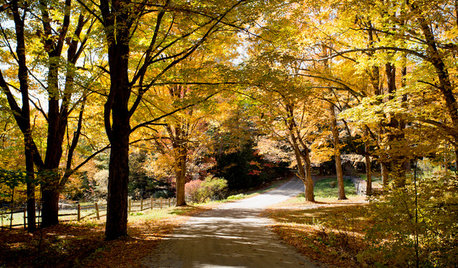Shumard Oak damage vs Scarlet oak in ice storms
katrina1
16 years ago
Featured Answer
Sort by:Oldest
Comments (22)
alabamatreehugger 8b SW Alabama
16 years agoRelated Professionals
Wareham Landscape Architects & Landscape Designers · Alamo Landscape Contractors · Aloha Landscape Contractors · Bellefontaine Neighbors Landscape Contractors · Biloxi Landscape Contractors · Fort Atkinson Landscape Contractors · Gainesville Landscape Contractors · Hoover Landscape Contractors · Orland Park Siding & Exteriors · San Diego Siding & Exteriors · Franklin Square Siding & Exteriors · Centennial Decks, Patios & Outdoor Enclosures · Crystal Lake Decks, Patios & Outdoor Enclosures · New Albany Decks, Patios & Outdoor Enclosures · South Lyon Decks, Patios & Outdoor Enclosuresspruceman
16 years agoMissSherry
16 years agoquirkyquercus
16 years agojqpublic
16 years agoquercus_macrocarpa
16 years agoalabamatreehugger 8b SW Alabama
16 years agokman04
16 years agokman04
16 years agofatamorgana2121
16 years agoscotjute Z8
16 years agoquirkyquercus
16 years agobengz6westmd
16 years agokatrina1
16 years agoshortleaf2002
16 years agokman04
16 years agokatrina1
16 years agoshortleaf2002
16 years agokatrina1
16 years agokatrina1
16 years agoshortleaf2002
16 years ago
Related Stories

WINTER GARDENINGHow to Help Your Trees Weather a Storm
Seeing trees safely through winter storms means choosing the right species, siting them carefully and paying attention during the tempests
Full Story
KITCHEN OF THE WEEKKitchen of the Week: The Calm After the Storm
Ravaged by Hurricane Sandy, a suburban New York kitchen is reborn as a light-filled space with a serene, soothing palette
Full Story
MONTHLY HOME CHECKLISTSYour Fall Home Maintenance Checklist
Prep your house and yard for cold weather with this list of things to do in an hour or over a weekend
Full Story
DISASTER PREP & RECOVERYFamily’s New Style Rises in the Aftermath of a Flood
After their damaged walls are demolished, homeowners realize they like the open space and decide to keep it
Full Story
FALL GARDENINGHouzz Call: Show Us Your Autumn Views
Share your pictures of fall foliage and decor in the Comments. Your photos may be featured in an upcoming story!
Full Story
ROOFSWhat to Know Before Selecting Your Home’s Roofing Material
Understanding the various roofing options can help you make an informed choice
Full Story
LANDSCAPE DESIGN7 Great Trees for Summer Shade and Fall Color
These landscape-pro faves straddle the seasons beautifully. Could one enhance your own yard?
Full Story
FALL GARDENING11 Trees for Brilliant Fall Color
Give your landscape the quintessential look of autumn with the red, orange and yellow leaves of these standouts
Full Story
TILETop Tile Trends From the Coverings 2013 Show — the Wood Look
Get the beauty of wood while waving off potential splinters, rotting and long searches, thanks to eye-fooling ceramic and porcelain tiles
Full Story
HOUSEKEEPINGTo-Dos: Your March Home Checklist
It’s time to rid yourself of winter’s heaviness and set up for spring
Full Story








quercus_macrocarpa